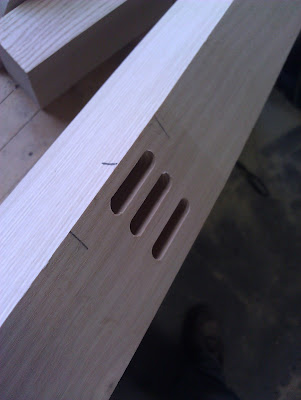I've done the final sanding on the base, so its ready for its first coat of oil. I opted to use figure eight fasteners to attach the top since the grain where the legs would join is not going the right direction. This will make servicing the table easy if ever needed.
Finally today, I did all the edge softening on the top, a final once over on the edges, and sanded through 320 grit. It looks pretty amazing.










































